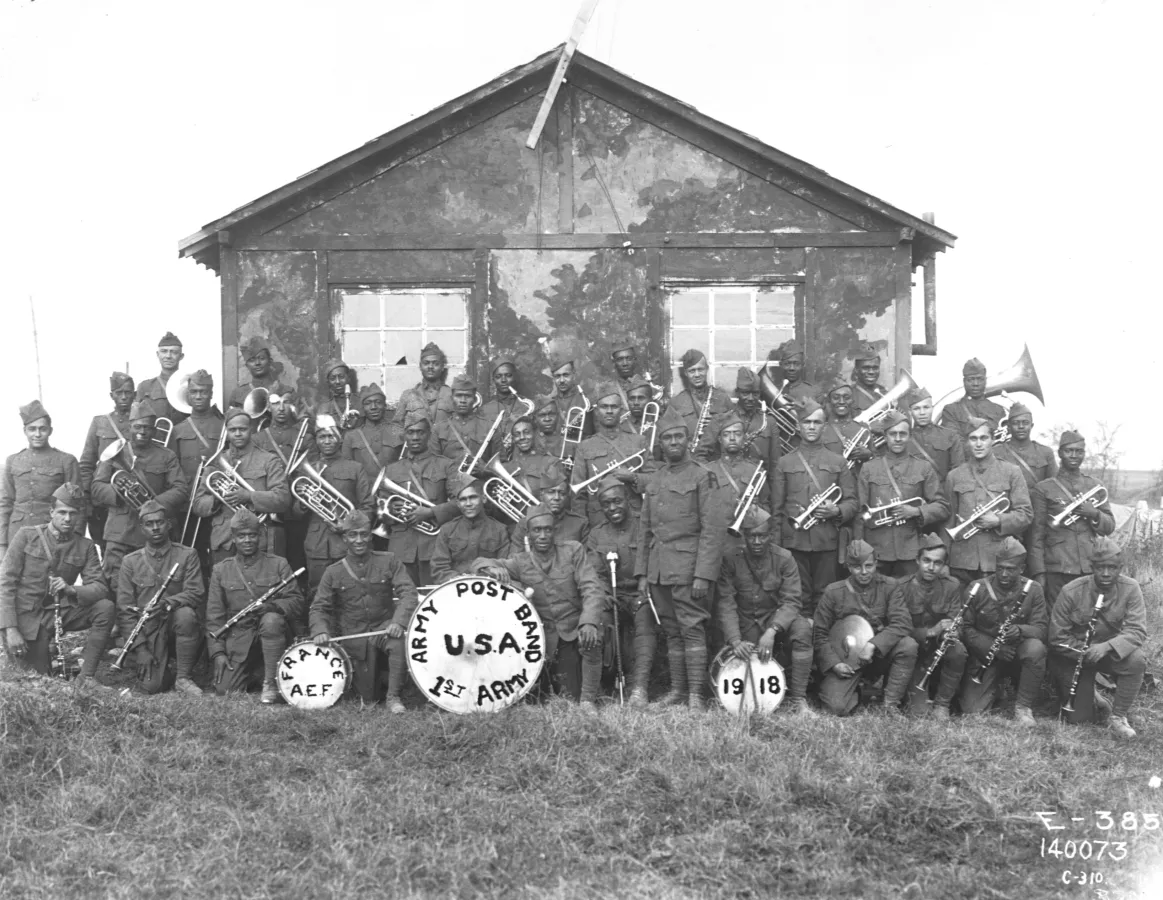The Harlem Hellfighters: The All-Black Combat Unit of WW1
- T. Brookshire

- Dec 15, 2023
- 3 min read
Updated: Dec 17, 2023
The Harlem Hellfighters, officially known as the 369th Infantry Regiment, were an African American unit in World War I and one of the most celebrated regiments in American history. Their story is not just a tale of combat but also one of resilience, talent, and breaking barriers in a time of pervasive racial segregation and discrimination.
Comprising mainly African American soldiers, the Harlem Hellfighters were primarily drawn from New York City's Harlem neighborhood. They were initially constituted as the 15th New York National Guard Regiment and were later renumbered as the 369th for federal service. Despite the rampant racism of the era, these men volunteered to serve their country with the hope of proving their worth and patriotism.

Fighting Alongside the French during WW1
Their deployment in World War I was marked by extraordinary challenges and achievements. When the United States entered the war in 1917, the Harlem Hellfighters were eager to fight. However, due to racial prejudices, they were relegated to non-combat duties initially. It wasn't until they were assigned under French command that they got the opportunity to fight on the front lines, as many white American soldiers refused to fight alongside them. The French Army welcomed them, providing them with French helmets and rifles, and integrating them into their units.
Battle of Meuse-Argonne
The Harlem Hellfighters spent an unprecedented 191 days in the front-line trenches, more than any other American unit, and never lost ground to the enemy.
Their most notable engagement was the Battle of Meuse-Argonne, the largest offensive in United States military history. The Harlem Hellfighters fought with distinction, advancing through enemy lines under heavy fire. Here, they displayed remarkable bravery and skill, earning them the nickname "Hellfighters" by their German adversaries for their toughness in battle. Their bravery was not only a demonstration of their military prowess but also a bold statement against the racial prejudices that had marginalized them.
James Reese Europe: America's Jazz Ambassador
The regiment’s time in combat was not just marked by their fighting spirit but also by their cultural impact. They introduced jazz music to France, with the regimental band, led by James Reese Europe, a prominent figure in the Harlem Renaissance. Their music provided a morale boost to both American and French troops and helped bridge cultural gaps.
Private Henry Johnson: Black Death
Among the notable officers who rose through the ranks, Sgt Henry Johnson is among many who stands out for their exceptional leadership and contributions. During a night raid, then-Private Henry Johnson fought off a German squad of 25, saving a fellow soldier and preventing their position from being overrun. For his bravery, he received the Croix de Guerre with a special citation, one of France’s highest military honors.

Harlem Parade Celebrating the Harlem Hellfighters
After the Great War, the 369th returned to a huge victory parade in New York in February of 1919. Thousands gathered along 5th Avenue and 42nd Street, outside the New York Public Library, welcoming home the brave soldiers. The division was even featured prominently on the cover of the Sunday New York Times.


Unwelcomed Heroes
But despite this celebration, little to nothing changed in their day-to-day lives. It would take another world war, and decades of civil rights activism before the hopes of these African American soldiers would start to be realized.
Legacy
In a long-overdue recognition, the U.S. Congress posthumously awarded the Congressional Gold Medal to the Harlem Hellfighters in 2021.
The Harlem Hellfighters’ recognition is more than an acknowledgment of past heroism; it’s a compelling reminder of the ongoing journey towards a more inclusive and equitable society. Their story, once overshadowed by the biases of their time, now shines as a testament to courage, resilience, and the relentless pursuit of dignity and respect.


































Comments